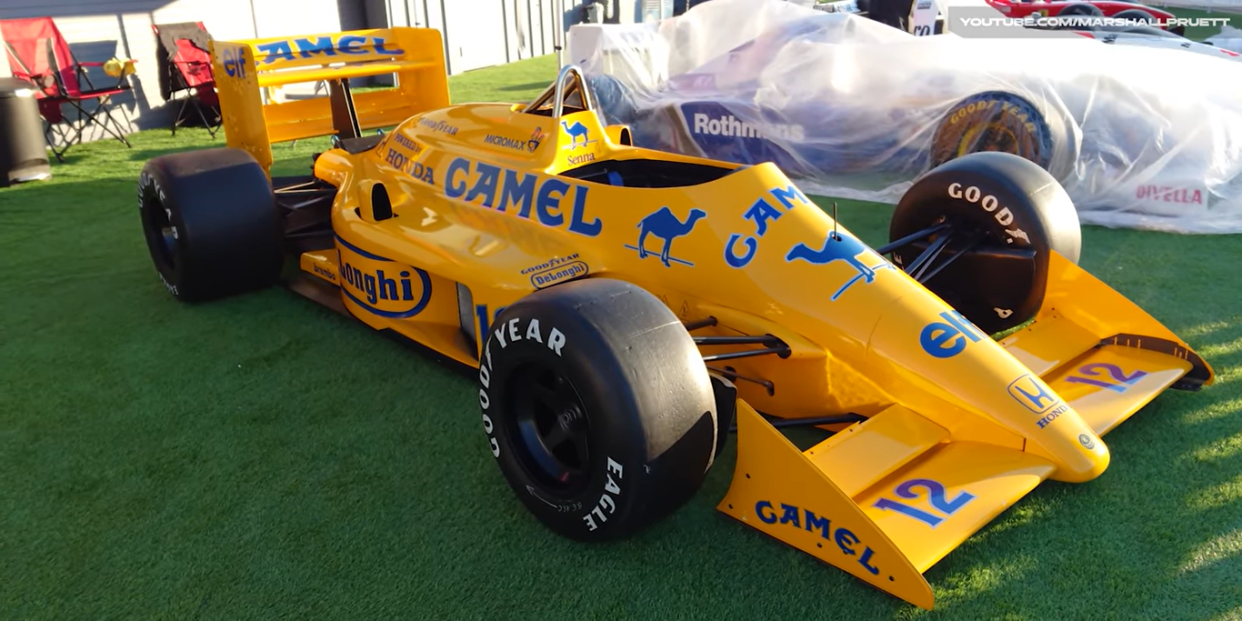Tour 35 Years of Formula 1 Downforce History

While the exact style of the aerodynamic advantages may have changed over the years, the past-half century of Formula 1 racing has been decided in part by the small advantages teams build into their cars through hours of wind tunnel and simulation time. The resulting modern cars are incredibly intricate, down to tiny winglets underneath the cars that are never meant to be seen by anyone, especially competitors. Decades earlier, the fastest cars got by on simple, massive wings and relatively clean body designs. In both cases, those outside of a racing team rarely get to see the specific tools of the trade that make these cars so fast.
That's what makes the public presentation of a collection like Juan Gonzalez's so valuable. Road & Track Contributing Editor Marshall Pruett recently got to film a collection of ten of his cars up close, with no restrictions against showing the underbody, splitter, and other downforce elements that would have been hidden from the public whenever possible when these cars originally raced.
The collection starts with a 2017 Toro Rosso car, packed with complicated winglet designs meant to build downforce and optimize aerodynamic advantages whenever possible. It then moves backward through time, through a series of Ferrari and McLaren entries that span the 2010s, 2000s and late 1990s. Here, we see the cars getting progressively simpler as more and more aero focus is put on single elements, like massive front wings and turning vanes.
Finally, Pruett gets a look at a few cars from the late 1980s and early 1990s. These cars look shockingly simple in comparison to the later competitors, with more natural lines and far fewer small downforce components. The final car in the collection, a 1987 Lotus, is particularly memorable: in the hands of Ayrton Senna, the Lotus 99T was the first active suspension car to win a Formula 1 grand prix.
You Might Also Like

 Yahoo Movies
Yahoo Movies 
